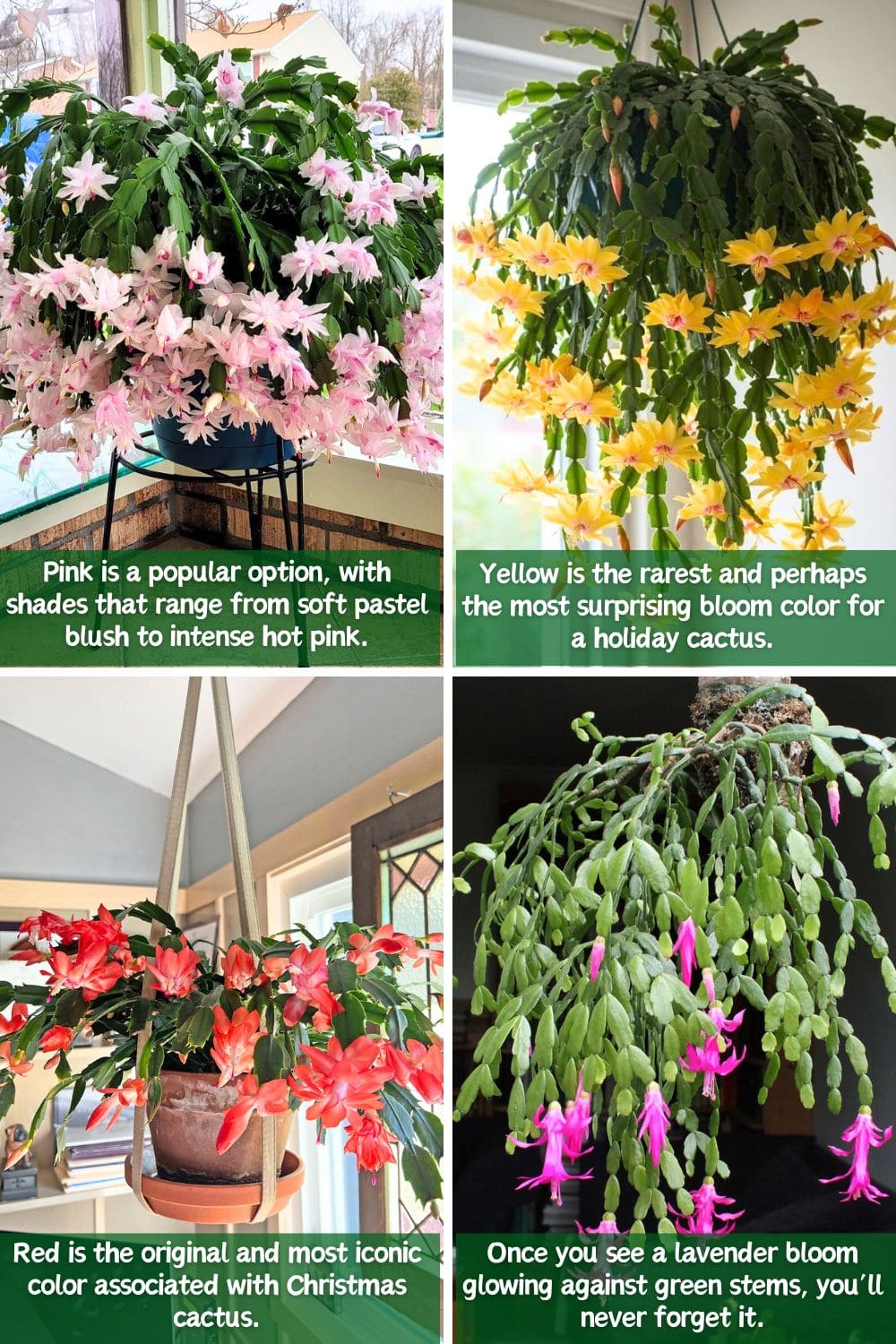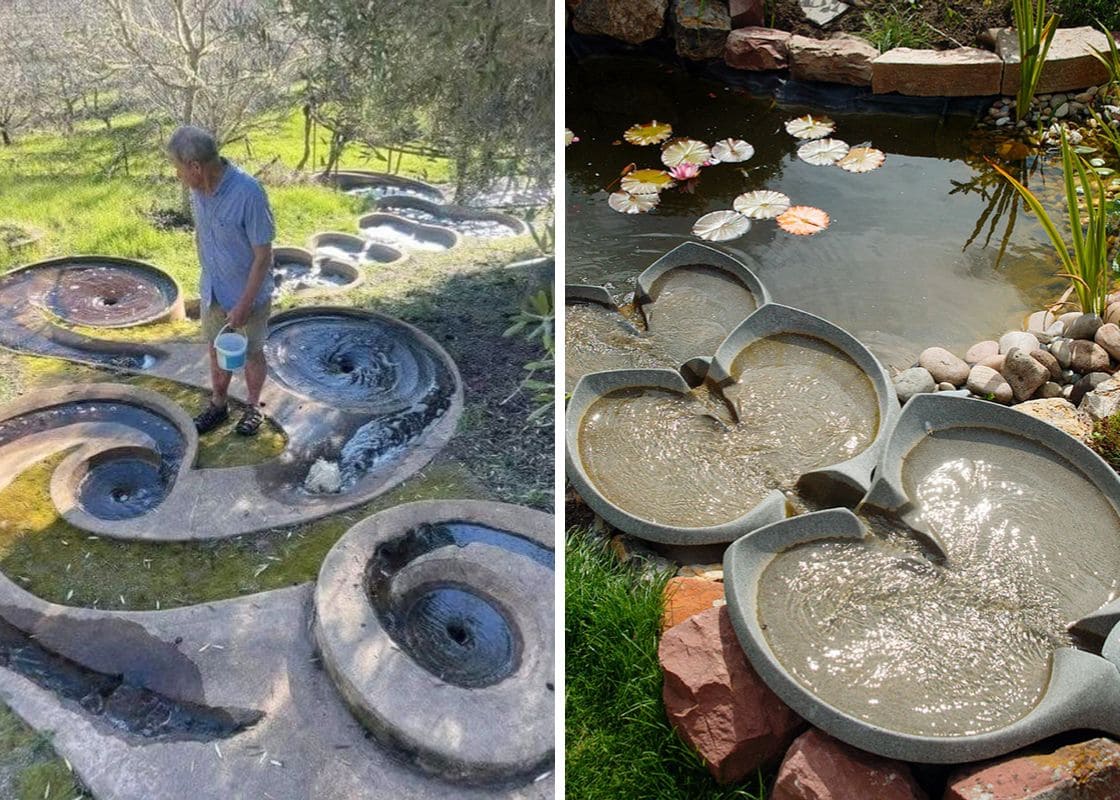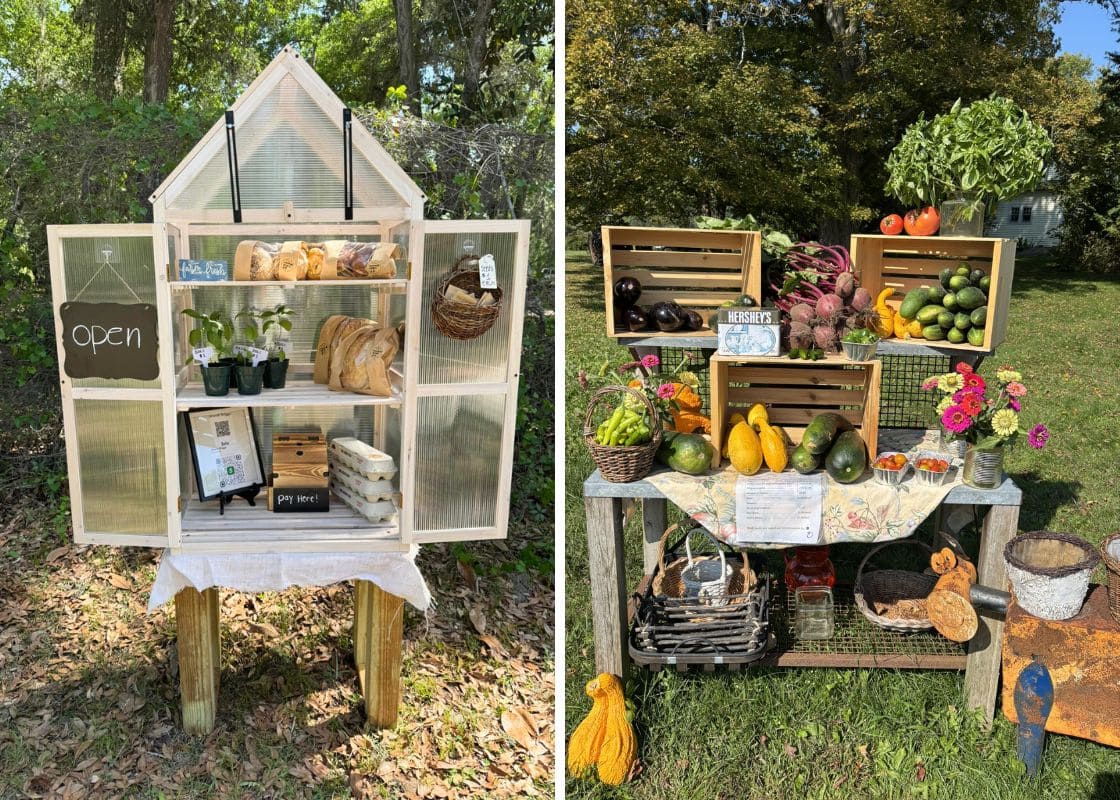When the cold months roll in and gardens go quiet, the Christmas cactus begins its show. These charming holiday plants defy the winter gloom by bursting into vibrant bloom.
What makes them even more magical is the sheer range of colors they come in from classic reds to glowing oranges, bright pinks, even yellow and purple.
Despite being called cactus, these beauties are tropical epiphytes from Brazil. That means they grow not in dry deserts, but clinging to trees in humid forests.
They prefer cool temps, indirect light, and regular watering, not quite what you’d expect from a cactus.
Three Types of Holiday Cactus You Should Know
1. Christmas Cactus (Schlumbergera bridgesii)
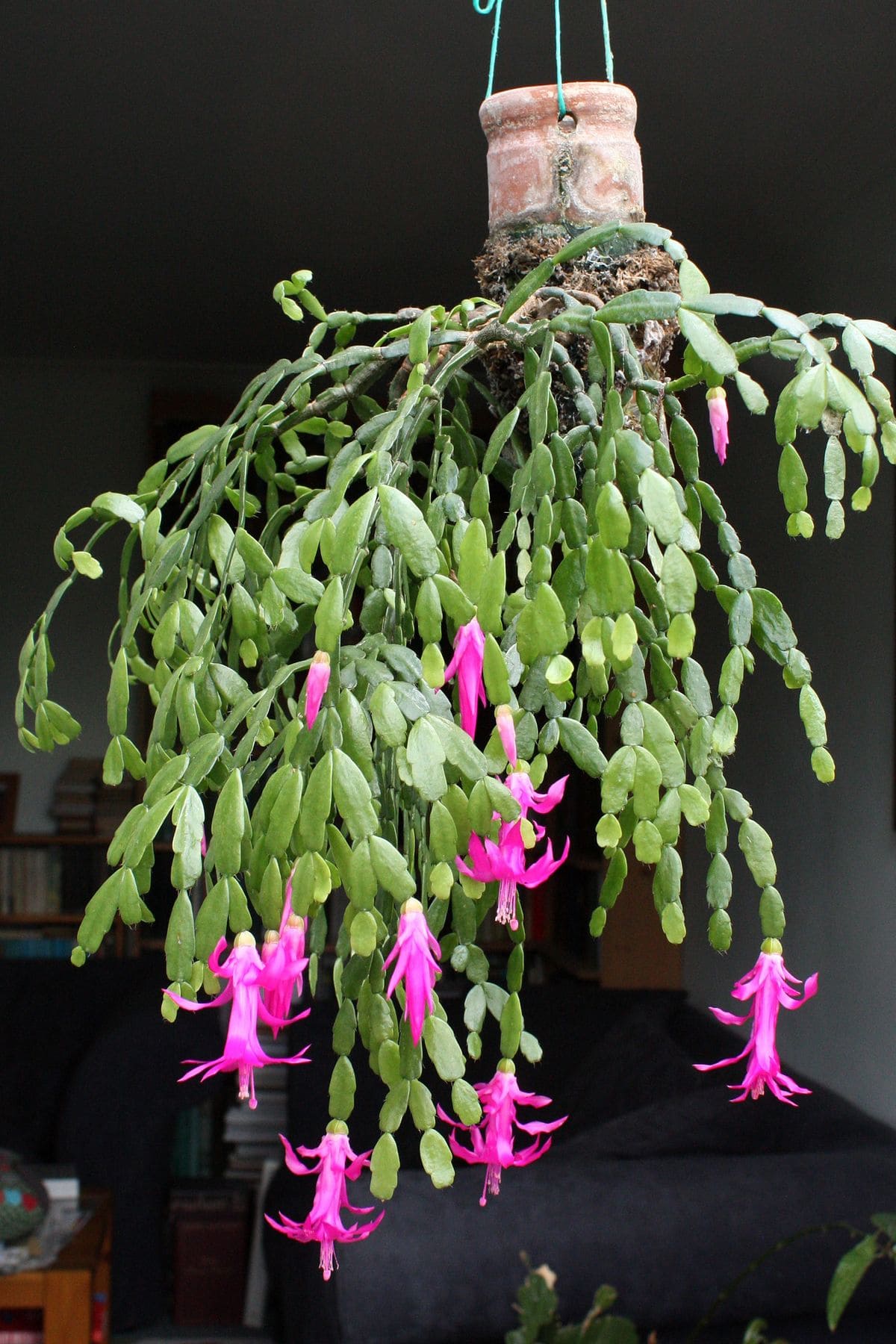
This is the true Christmas cactus, often passed down through generations like a family heirloom. It typically blooms from late November through January.
The stems are soft-edged and smooth, and the flowers tend to hang downward with a graceful arch.
You’ll find blooms in classic holiday shades, mostly reds and whites, but there are also occasional yellows and pale pinks.
What makes them stand out is their symmetrical flower form and the way their blossoms seem to drape like ornaments. They’re especially stunning in hanging baskets or on elevated plant stands.
2. Thanksgiving Cactus (Schlumbergera truncata)
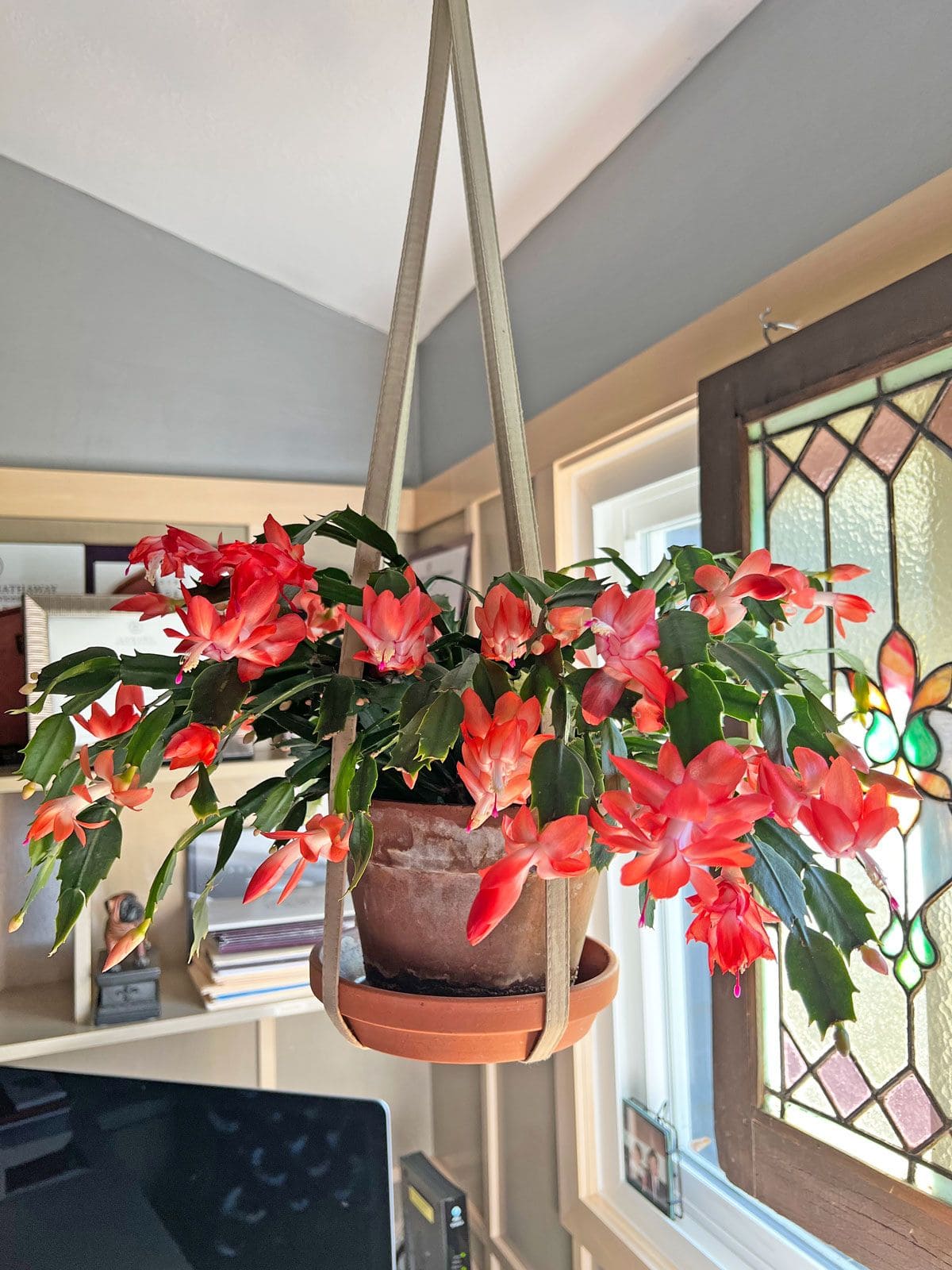
Often mistaken for the Christmas cactus, the Thanksgiving cactus blooms a bit earlier, usually from mid-November through December.
The leaf segments (called phylloclades) have distinct, claw-like hooks or pointed teeth along the edges, earning it the nickname “crab cactus” or “lobster cactus.”
Its flowers are more outward-facing and slightly asymmetrical, with blooms often sprouting from the sides of the stems rather than the tips.
This type is one of the easiest to find in garden centers, and its color range is impressive, featuring yellow, white, deep pink, red, and peachy-orange tones.
Specially, hummingbirds are especially drawn to its tubular, satiny flowers.
3. Easter Cactus (Hatiora gaertneri)

This type is the most challenging of the trio, yet it rewards patient growers with the most brilliant blooms.
The Easter cactus usually flowers in April and May, though it may surprise you with a bonus flush in the fall. The petals are shaped like flaring trumpets and come in shades of red, magenta, pink, and rich purple.
Unlike its holiday cousins, the Easter cactus has bristle-tipped leaf segments and needs careful watering.
It dislikes being either too dry or too wet and may drop its segments if stressed. Using a soil moisture meter can make all the difference in coaxing out its incredible flowers.
See also: 10 Common Mistakes People Think Are Correct When Caring for Christmas Cactus
Christmas Cactus Flower Colors
Red Blooms

Red is the original and most iconic color associated with Christmas cactus. Classic varieties often feature deep, velvety crimson or bright scarlet petals, sometimes tipped with a faint pink or white edge.
These blooms pair beautifully with holiday reds and greens, making them a timeless favorite for seasonal decor.
If your plant has symmetrical, bell-shaped red blooms that arch downward, it’s likely a true Christmas cactus (Schlumbergera bridgesii).
These plants look stunning in hanging baskets where the flowers can naturally droop and drape. For best bloom quality, keep the plant in a cool, bright room with short nights in late fall.
Red cultivars such as ‘Dark Marie’ or ‘Thor Carmen’ are easy to find and reliably bloom year after year.
Pink and Fuchsia Blooms
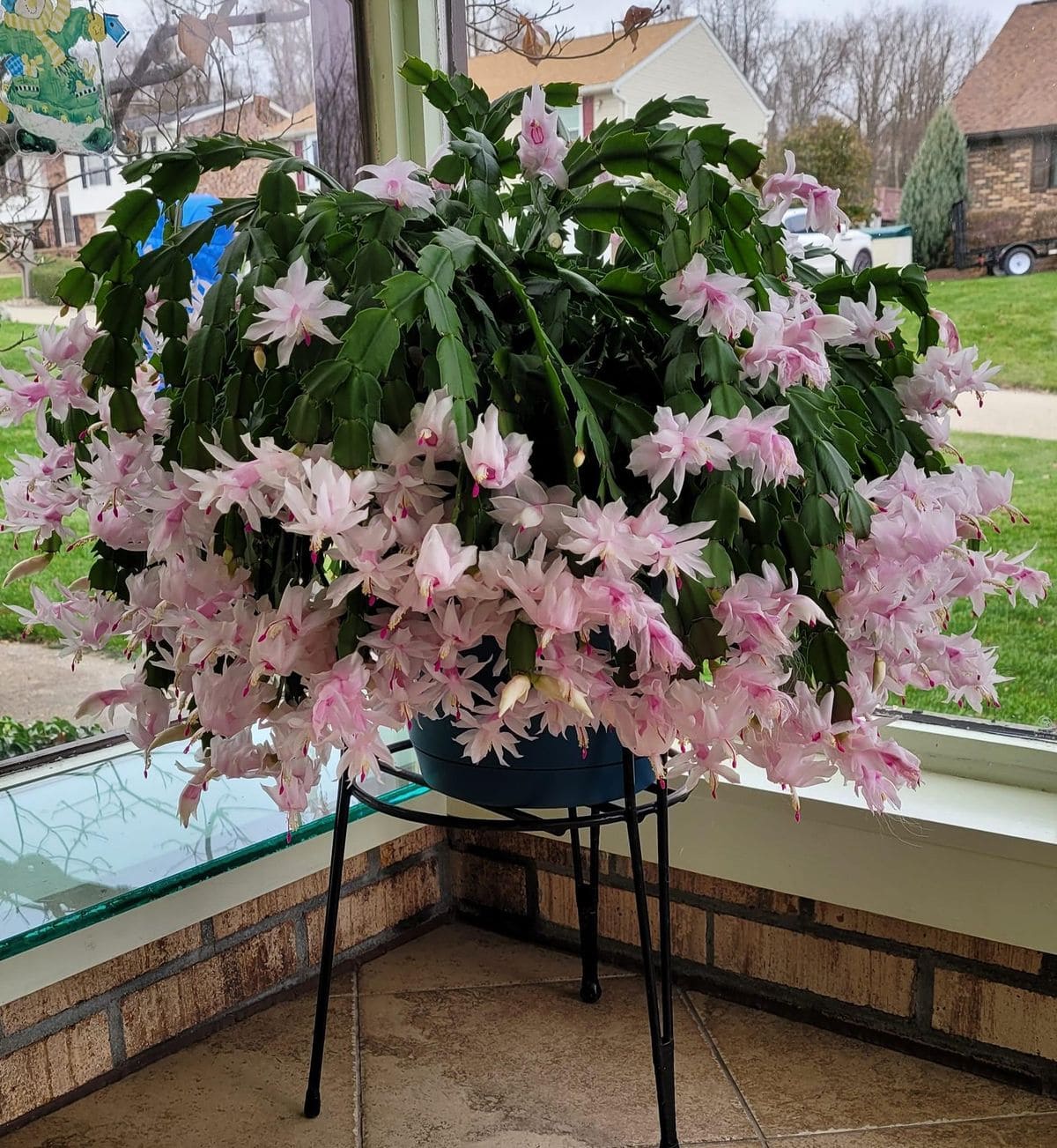
Pink is a playful and popular option, with shades that range from soft pastel blush to intense hot pink.
Some blooms lean into a vivid fuchsia or magenta. These colors are especially charming when placed near windows where natural light can make their hues appear almost electric.
Pink varieties are commonly found in Thanksgiving cacti and are prolific bloomers. You might notice the flowers point outward and the leaf segments have noticeable teeth or claws.
These pink bloomers like to be kept slightly pot-bound and often reward consistent care with massive flushes of color.
White and Cream Blooms

White Christmas cactus flowers are the epitome of understated beauty. Their soft, translucent petals often have a pearly sheen and may be tinged with pale green, cream, or buttery yellow near the throat.
White-blooming varieties are slightly more delicate and can benefit from stable temperatures and indirect light during the blooming period.
If you want to highlight their purity and contrast, pair them with metallic pots, deep green foliage, or even soft candlelight on a windowsill.
While harder to find than pink or red, white blooms are worth seeking out if your aesthetic leans toward minimalism or wintry elegance.
Orange and Apricot Blooms

Orange Christmas cactus varieties are warm, energetic, and wonderfully unexpected. These tones may range from soft peach and coral to rich tangerine or coppery amber.
Varieties like Tango or Peach Parfait offer a citrusy punch that complements rustic, boho, or tropical-themed interiors.
They tend to bloom on Thanksgiving cactus hybrids and may appear earlier in the season than traditional reds or whites. Place them in a sunlit room with some morning light to really bring out their brilliance.
If you’re someone who gravitates toward sunset shades or fall-inspired decor, orange-blooming cacti are an energizing choice.
Purple and Lavender Blooms
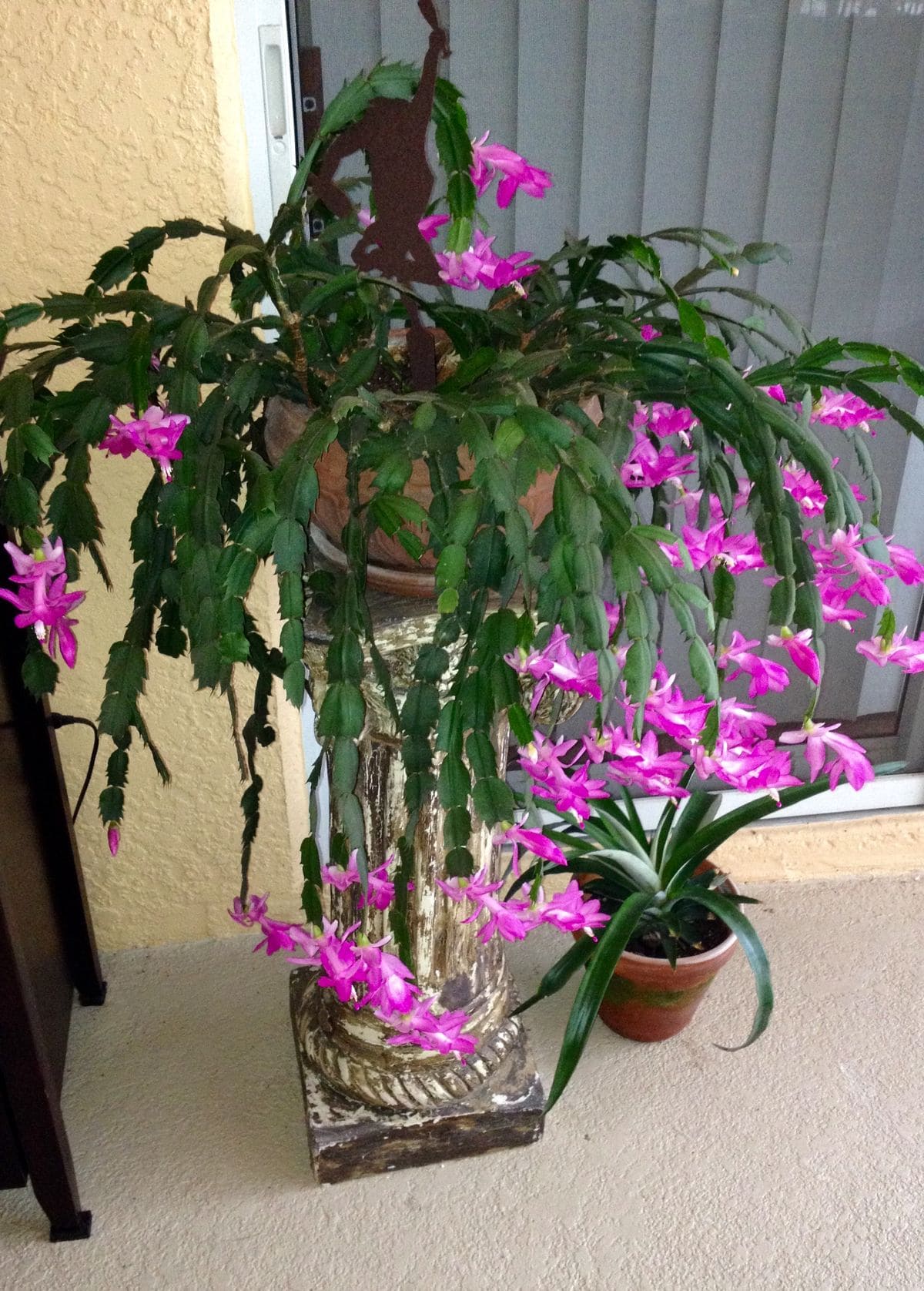
Purple may not be the first color you think of when it comes to winter flowers, but once you see a lavender or violet bloom glowing against green stems, you’ll never forget it.
These colors add a regal and mysterious tone to your home. In cooler rooms, their shades often deepen, turning soft lavender into bold plum or deep grape.
Cultivars like Thor Viole’ or lesser-known hybrids produce trumpet-shaped blooms that open slightly more horizontally.
Purple blooms are often favored by collectors or those who enjoy the unusual. They may not bloom as heavily as pinks or reds unless given ideal light and nighttime cooling.
Yellow Blooms
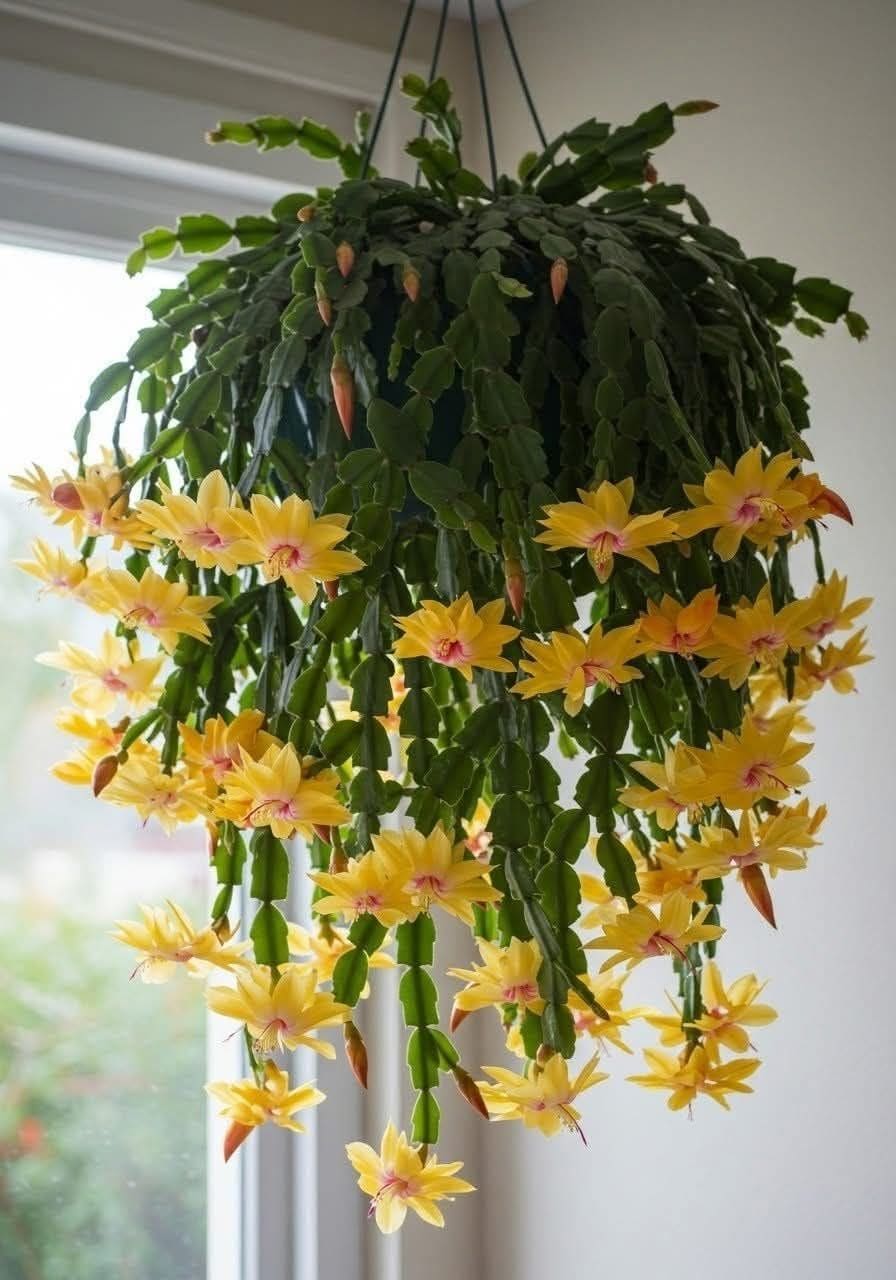
Yellow is the rarest and perhaps the most surprising bloom color for a holiday cactus. These plants typically produce soft lemon, creamy gold, or buttery ivory blooms that seem to glow from within.
As the flowers mature, their yellow tones may warm slightly into peach or light apricot depending on the variety and lighting.
Look for cultivars like Gold Charm or pale yellow hybrids. Because they’re uncommon, they make lovely gifts or statement pieces.
To help yellow blooms retain their brightness, you can place the plant near a bright window but avoid direct afternoon sun.
Tips for Picking the Right Christmas Cactus Color and Type
Choosing a holiday cactus isn’t just about what’s blooming now, it’s also about understanding when and how it will bloom next.
If you’re buying in November or December, you’re most likely looking at a Thanksgiving cactus, even if it’s labeled as a Christmas cactus.
Next, think about your decor colors. Red and white are classic, but pink, orange, or purple might better suit a modern or minimalist home.
If you’re gifting one, a blooming plant in an unexpected color like apricot or lavender, feels both festive and memorable.
If you want a challenge, the Easter cactus offers vibrant rewards but needs more attention. For beginners, Thanksgiving and Christmas types are more forgiving and tend to bloom more reliably with less fuss.
Read more: Guide on Growing Christmas Cactus Successfully In a Pot
